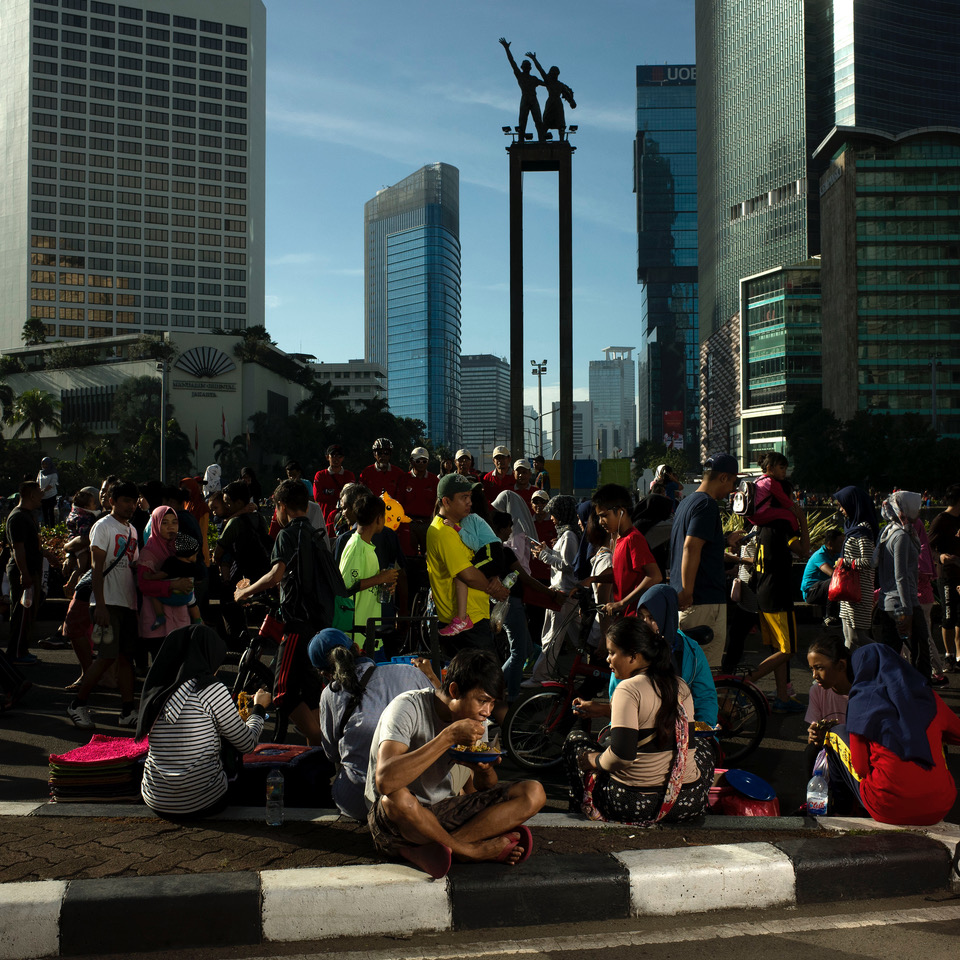Last Updated on 02/27/2019 by Mark Beckenbach
All images by Josh Estey. Used with permission.
Since every city is a multi-faceted ecosystem, photographers are faced with a myriad of stories, issues, and realities to capture. In his photo essay titled No Land Left to Play, Josh Estey chose to paint a picture of how the Indonesian capital of Jakarta has become a congested, mega metropolis with hardly any open spaces for its residents.
Above: Devouring a fresh bowl of instant noodle among throngs of merry makers during Jakarta’s weekly Car Free Day, a lone man finds a moment to himself amidst the City’s Iconic Welcome Monument in the heart of the worlds second largest megalopolises.. Although Car Free Day was initially planned to give people throughout this crowded city a place to walk, bike, and enjoy a rare bit of nature and open space, it has since turned into a kind of market day where the mass of humanity clog the streets, in an exact replication of what cars do the rest of the week.
A 2017 New York Times article says that more than 97% of Jakarta is now smothered by concrete and asphalt, and made a strong case of why the city could end up underwater. But that’s not the only problem it’s faced with. There’s also a scarcity of parks and it’s not the most walkable city either. All these problems have led Estey, who alternates between Los Angeles and Jakarta, to probe deeper into the issues and document how they are affecting the lives of Jakarta’s residents.
With virtually no public spaces to play, millions of Indonesians have been left without even the most basic of government services. This has forced Jakarta’s residents to define their own fun. The world’s second largest megapolis has been all but designed against it’s own people, extracting every last ounce of humanity from its residence. Big business, the authorities and corrupt city planners have turned this once sleepy backwater into a modern dystopian reality for the 25-million people who call Greater Jakarta home.
No Land Left to Play narrows the field further to show how Jakarta’s residents hardly have any free spaces left for play and recreation. So, they either get resourceful or grin and bear it.
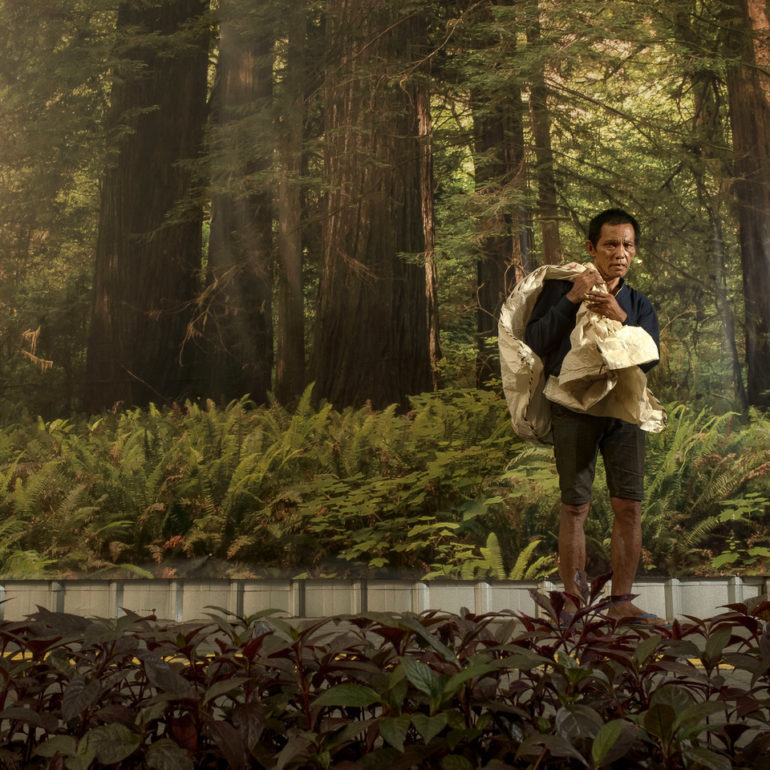
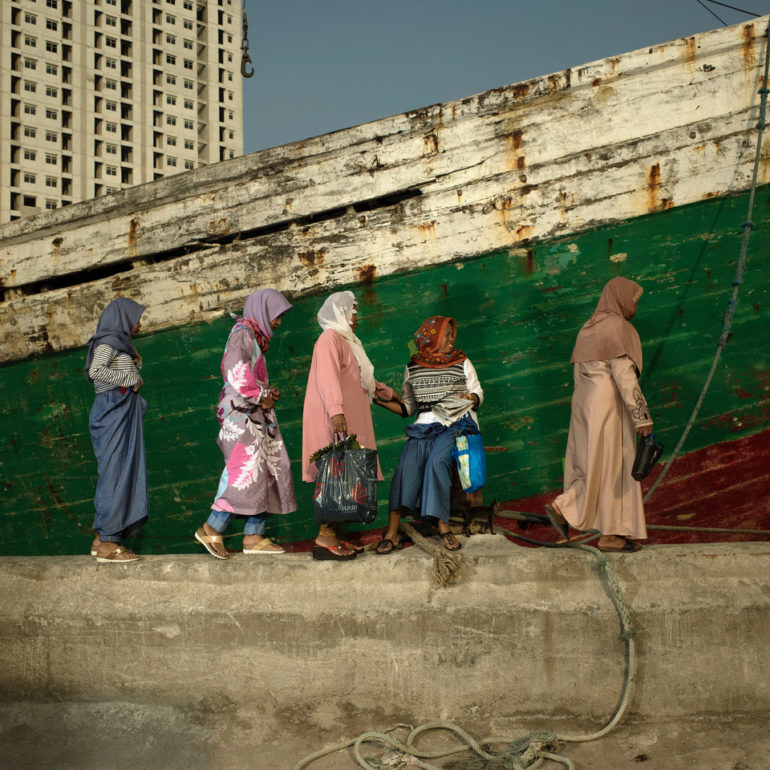
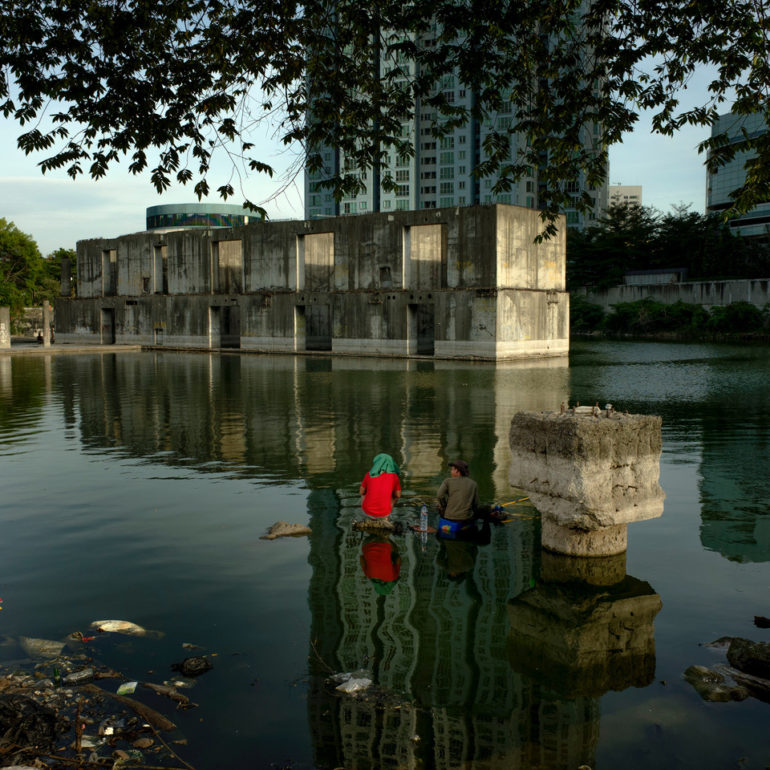
Two men fish while sitting on the remnants of a construction site that was left unfinished after an economic crash in the 1990s. These waters are heavily polluted, but it doesn’t stop men from fishing and young boys from swimming. Ironically only about half of Jakarta’s residents have clean water piped into their homes, while the rest pump ground water contributing to Jakarta becoming the fastest sinking city in the world.
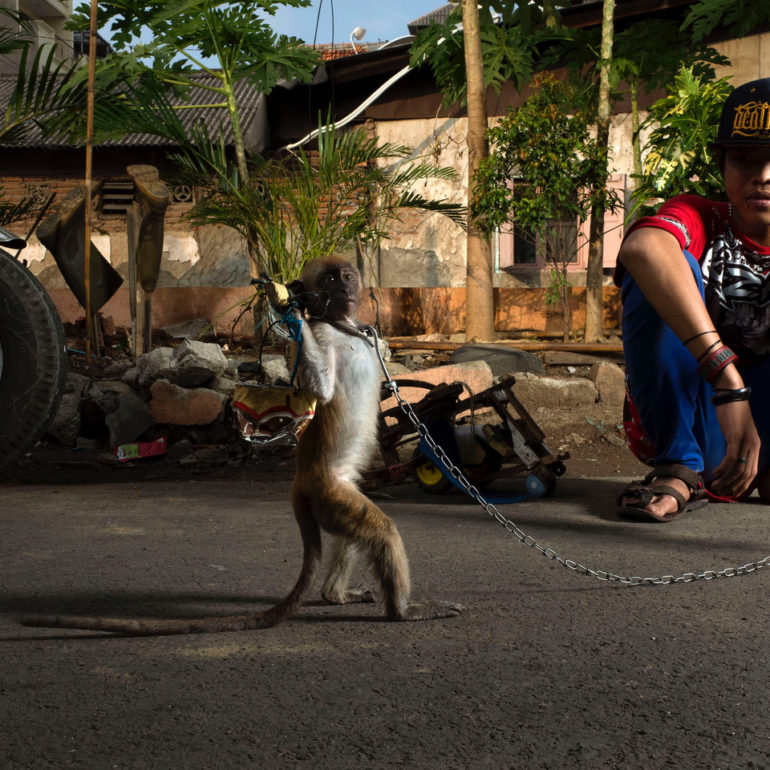
Armed only with a Ricoh GRII and a powerful off-camera strobe, Estey prowled the concrete jungle that is Jakarta to capture a variety of scenes that prove his case. By simplifying his gear this way, he is able to move seamlessly among his subjects, augment reality through the off-camera strobe, and craft an emotional resonance within found moments. While we’ve seen this technique at work in a number of Bruce Gilden-inspired street photos, Estey has proved that it also works even in the classic street and travel photography,
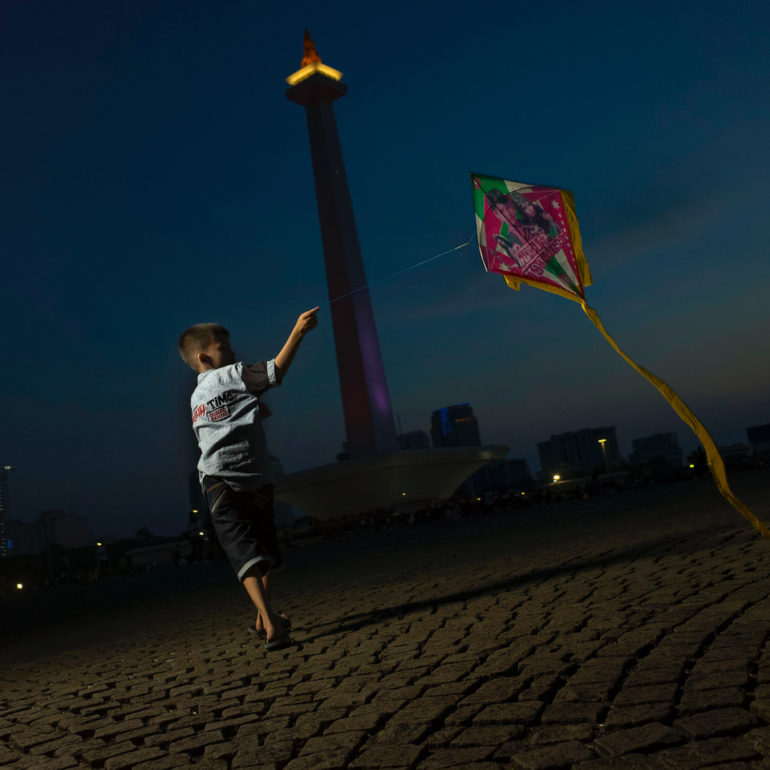
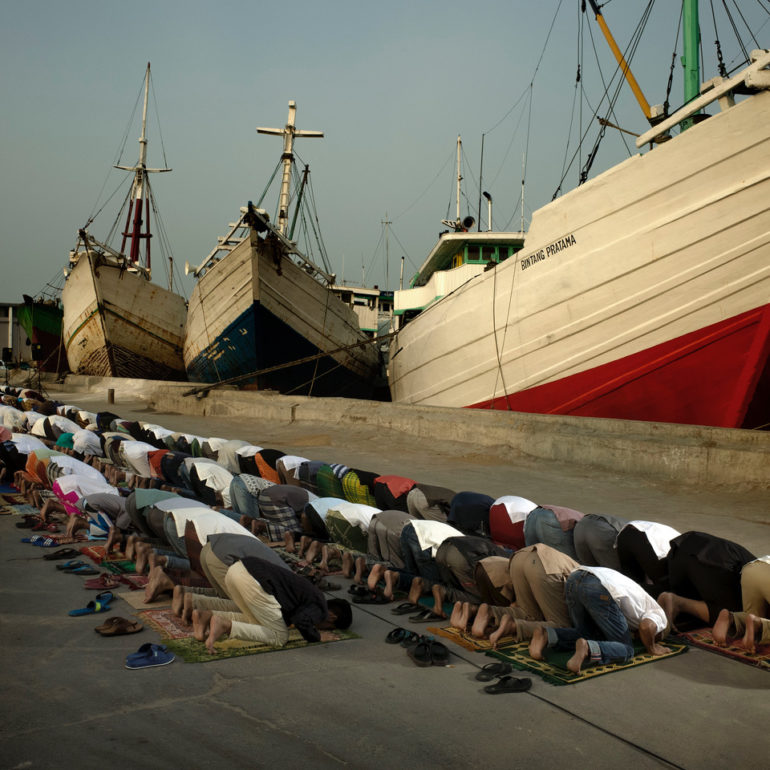
The morning of 2018 Idul Fitri saw fewer numbers of faith at Sunda Kelapa, which has historically been a large and vibrant port for trade, a place where the old sailing ships still dock in the shadow of new apartment high-rises.
Gathering at the port on the first morning after the holy month to pray is a tradition for local communities, but recent government efforts to “clean up” parts of the city, including the surrounding slums, to make way for huge high-rises have resulted in much lower attendance.
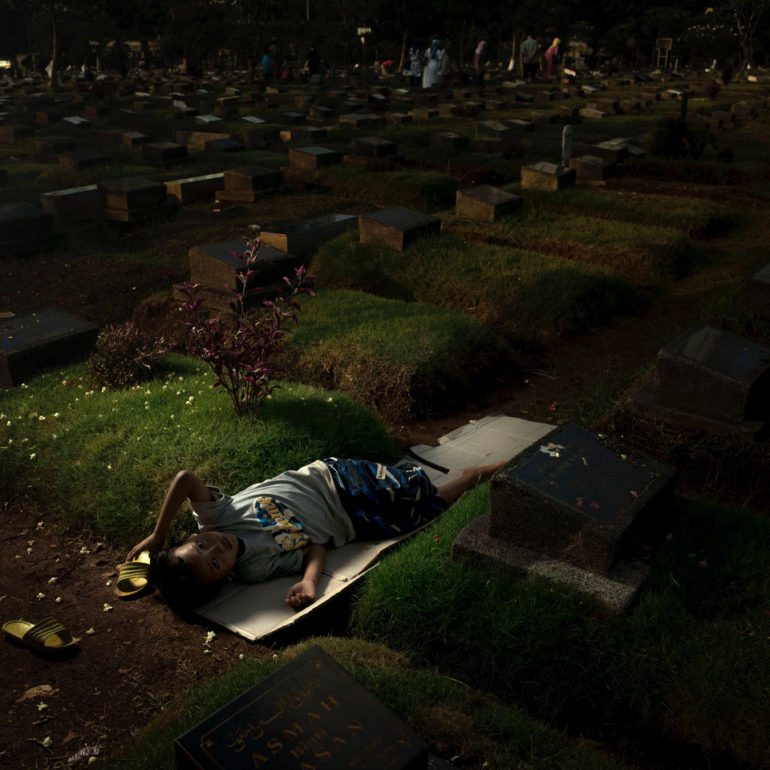
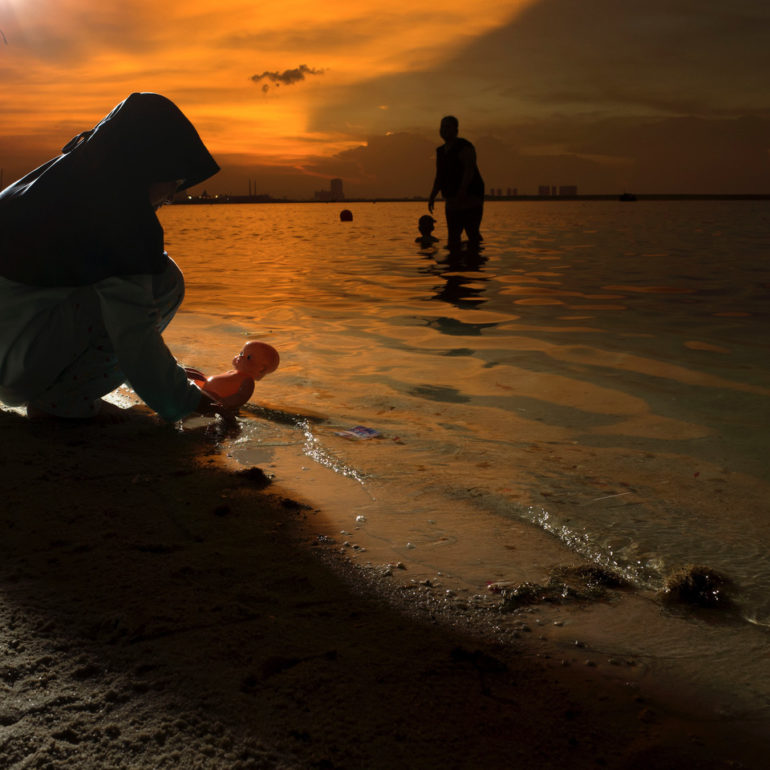
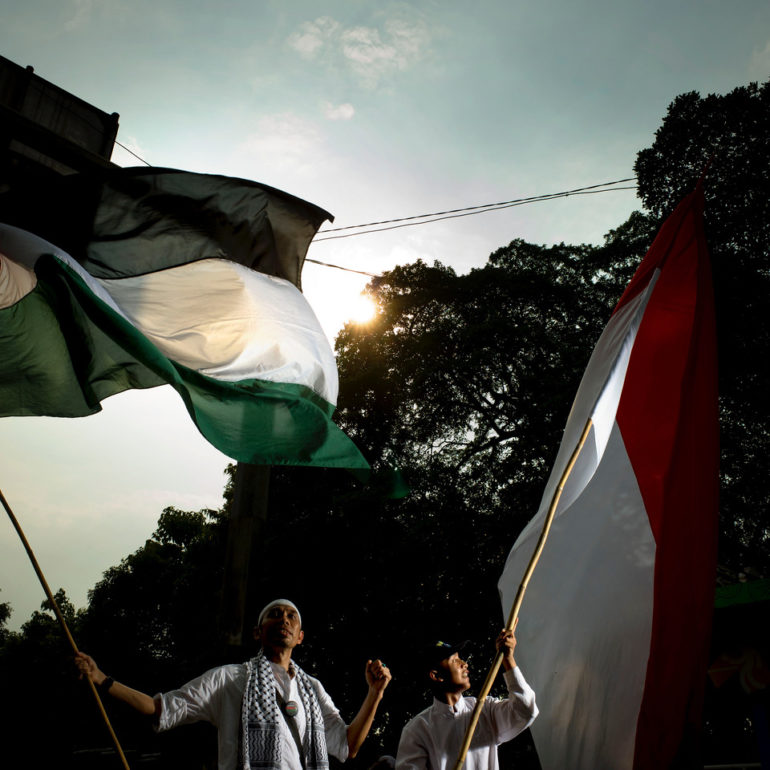
Visit Josh Estey’s website to see his other projects and follow him on Instagram to stay updated on his work.


